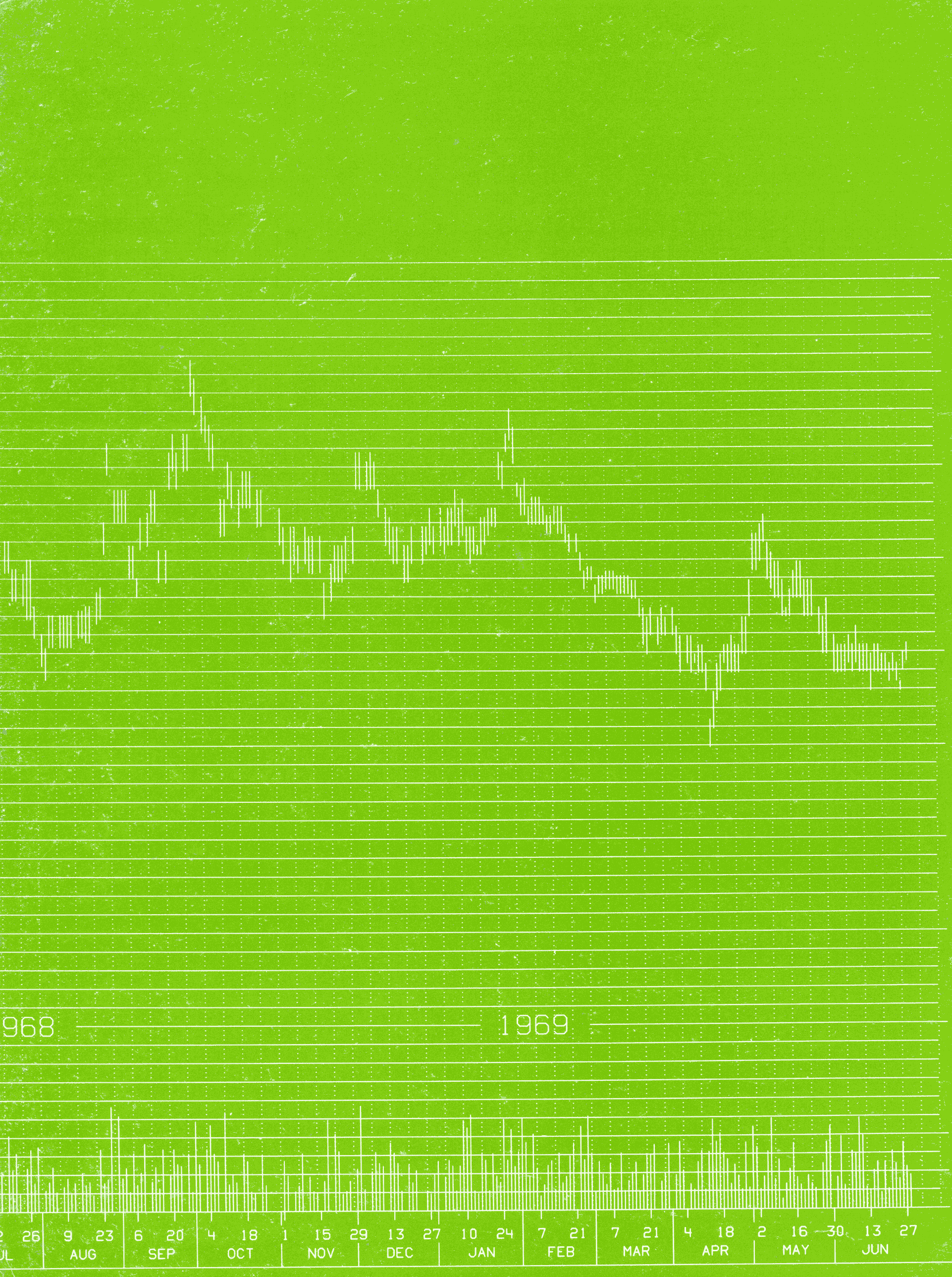

You start with the host computer - heart of the information system in any large, modern company. If you ask yourself how computer-generated information gets put into a form so people can read it, several answers come back - too many, in fact. Then you begin to see that the general purpose computer is surrounded by an amazing variety of specialized devices - printers, plotters, punches, collators, electronic character generators, scopes - each of them doing part of the output job, most of them ponderously slow, all of them requiring separate operators, spare parts, supplies, and maintenance.
At the same time you might be bothered by the dim future of such a conglomeration, because those special-purpose machines cannot bend to the continuing advances in the science of information handling. Each output device is frozen into a special purpose.
What we need is one inherently growth-oriented system that can accept all types of computer outputs: management reports, engineering data, engineering drawings, directories and catalogs. One system with enough speed to handle massive quantities of routine alphanumeric work, with graphics quality equal to the demands of sales proposals or engineering. One system with open-end expandability and flexibility that invites the inevitable changes and improvements yet to come in information handling. One system whose add-on expandability rejects obsolescence and assures the user that increased performance will always be available to match increased workloads and new applications.
The Information International FR80 is a film recorder designed for this era of automation, of miniaturization, of speed, and of sophisticated processing. At heart, it's a high-speed computer integrated with the world's most precise electro-optical imaging system. Together, these elements surpass all other graphics output devices in quality, speed, and versatility.
FR80 is, in fact, general purpose. That's why it can accept a magnetic tape in any format, produce images on film, merge and record on the same pass, store initiation parameters for different jobs, and allow the user to design forms, layouts, and special symbols at the console. FR80 is a distinct departure from intricate, specialized equipment that strains against the boundaries of electronic or mechanical feasibility. FR80 is inherently growth-oriented to meet a great variety of future as well as present operational requirements.
Specifically how does FR80 serve all of the consumers of computer-graphic outputs? On the following pages, we have organized the answers under four major headings:
Detailed specifications are presented at the end.
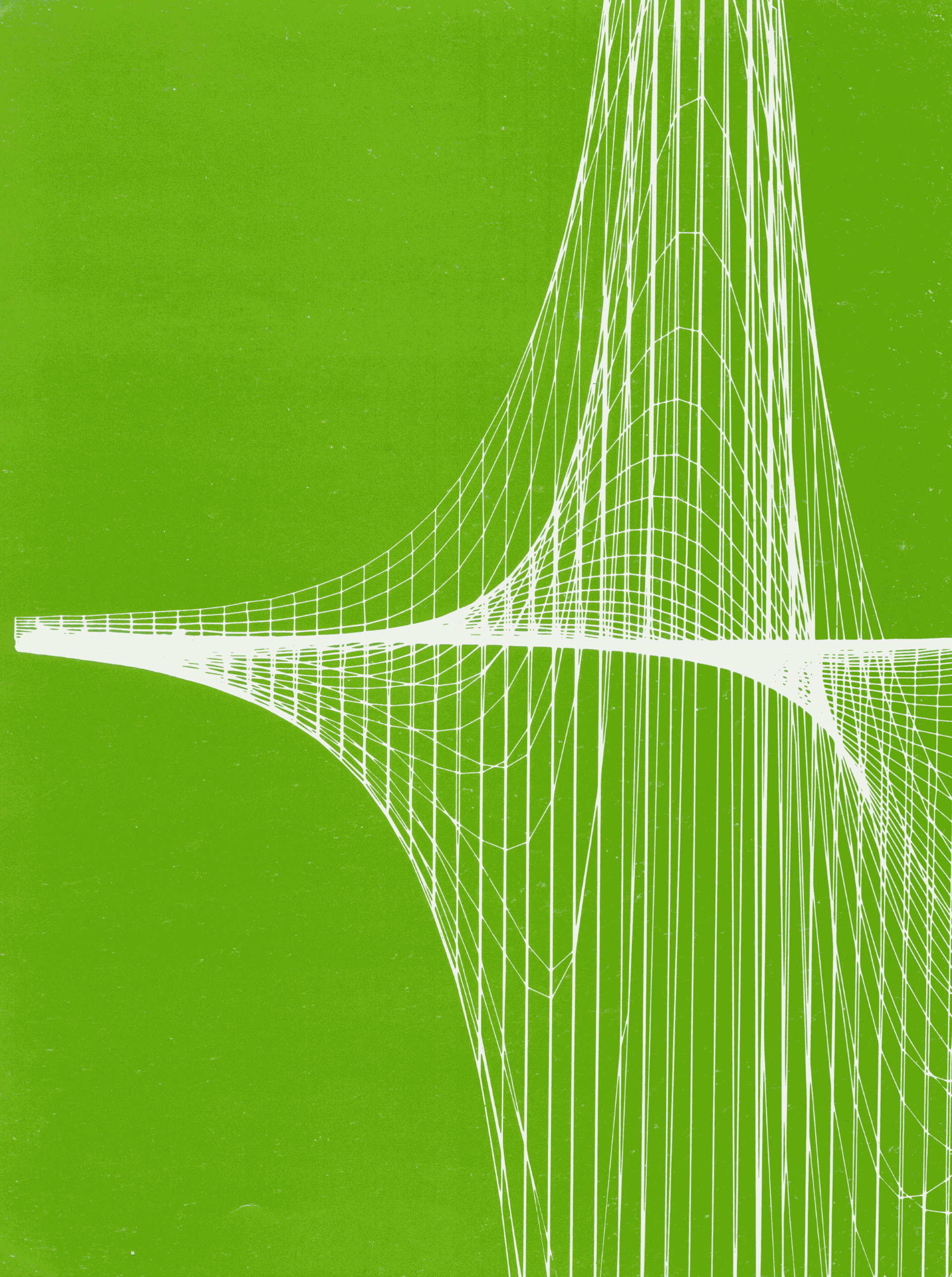
Here is a wide variety of information that is computer generated because it is voluminous, repetitive, and frequently printed. High-speed line printers have been the typical output media. FR80 far exceeds the line printer's performance in the following ways.
Speed and Versatility of Character Generation - FR80 contains a set of 128 characters, all of which can be easily modified or replaced by other symbols. The user can select 64 different character sizes. Character rate is 10,000 per second. A higher-speed page print capability is an optional addition.
Good Reproduction Quality - On 35mm aperture card film, FR80's advanced electro-optical system can resolve 80 lines per mm - the highest resolution ever achieved by a microfilm recorder. Masters (offset printing plates) made from the film are much sharper and more readable than from line printers or other CRT systems. Fifteen pages of material (8½ × 11 inches) can go on a single 35mm frame (4 pages on a 16mm frame). For distribution in retrieval systems, FR80 film copies are superior because the original FR80 microfilm is superior.
Combination of Text and Illustrations - FR80 is a true "computer graphics" system, not a character generator with apologetic line drawing capability. Curves, graphs, charts, and forms (see opposite page) are produced along with text, and FR80 will accept tapes formatted for other output devices, such as pen plotters.
Simultaneous Generation of Forms and Contents - Your own company's forms can be preprogrammed in FR80, in which case, both the form and its contents (from the data tape) are simultaneously recorded from the CRT. Because of the single writing source, the resulting film image is uniformly exposed for best reproduction. Where successive frames use different forms for the same data tape, multiple forms may be called as required. Forms and content are independently variable as to line width. Accurate form superposition permits use of standard forms without special alignment. Forms are available either through the graphics package, or as a separate service. An extensive multiforms capability, of course, requires additional core storage.
Book-Style Typesetting - A graphic arts option available with FR80 records graphic arts type fonts comparable to those from conventional line-casting machines. FR80 justifies right and left for any column width, with automatic letter and word spacing. Line and paragraph spacing are also automatic. Italics, boldface, and type size are selectable for various fonts.
Quick Turnaround Time - FR80 can go from job to job faster than any similar system. Stored initiation parameters are activated from the keyboard. And the system does not need coddling. There is virtually no drift. Focus is electronically controlled. You check film resolution once a day. Forms registration is automatic. Optics are fully aligned prior to delivery.
The recording of visualized experimental data puts several demands on an output system. Speed, precision, and adaptability to many kinds of data formats are particularly important. Conventional equipment, such as pen plotters, scopes, and strip chart recorders, answer only part of the requirement in each case. FR80 offers all of the following advantages.
Fast Turnaround Time - To the engineer waiting to see results, the thing that matters is the total time to record data, and this is the sum of startup plus run time. Initiation parameters for any tape format are stored in FR80 and activated in seconds, which means that this system can go from job to job, and format to format, with no delay. Drift, focus, registration, and optical alignment take care of themselves.
High Resolution of Plotted Data - Sharp, well-separated lines reveal more information, especially in converging plots. FR80 can resolve 80 lines per millimeter on 35mm film, the highest resolution of any production electro-optical system in the world.
Perfect Registration of Data and Grid - Because both data and grid reference lines are plotted from the same internal coordinate source, FR80 matches both with absolute accuracy.
Frame Abutment for Strip Charts - FR80 automatically records continuous charts with extreme accuracy. Alignment of adjacent frames is an inherent capability of a digital system, and it is done automatically in FR80. Spot position is controlled to an accuracy better than 0.01%.
Generation of Special Symbols - FR80 stores the standard 128 characters and symbols provided by Information International. These can easily be changed to any desired set, including exotic symbols. Standard features of FR80 include character rotation (0°, 45°, 90°, 135°, 180°, 225°, 270°, 315°), 64 character sizes, 8 line widths, and 8 intensity levels.
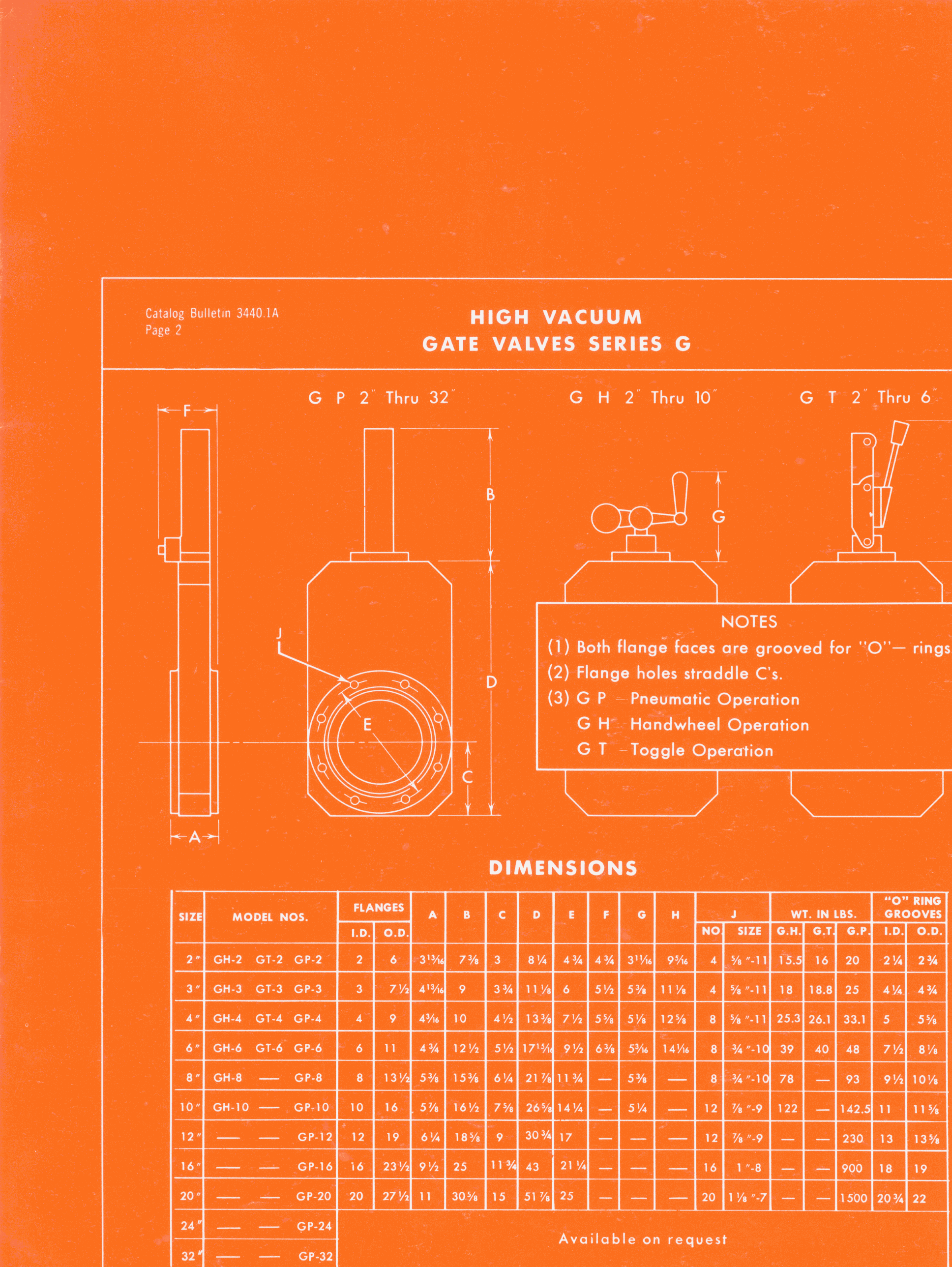
Until FR80 was developed, no electro-optical system could record a 34-inch by 44-inch (E-size) drawing on microfilm with a sharpness that later yielded a satisfactory blowback to readable size. Indeed, even an all-optical system cannot preserve acceptable sharpness in a single-step reduction from E-size to 35mm. FR80 offers a new solution to the old problem of reproducing and storing microfilm engineering drawings.
Sharpness and Accuracy FR80's electro-optical system is capable of resolving 80 lines per millimeter over a full aperture card image on 35mm film. Such sharpness is unique, and results in clean separation of closely adjacent lines after enlargements of 15X or 30X. Line widths after 30X enlargement are less than 15 mils. As for accuracy, FR80's spot is controlled to 1 part in 16,384, resulting in precision end-point match and repeatability.
Speed - Because engineering drawings vary greatly in density of information contained, absolute measurements of time for completion are impossible. FR80 is 200 to 1000 times faster than a typical pen plotter. The FR80 plotting rate is up to 7,000 inches per second at final working drawing size.
Quick Setup - Setup time is a few seconds, because initiation parameters for any tape format are memory-stored. There is virtually no drift. Focus is electronically controlled. No optical alignments are necessary.
Adaptability to Drawing Specifications - FR80, being a stored-program system, conforms readily to the various rigid specifications for engineering drawings. Using light pen and scope, one can easily create special symbols which are then stored for use along with the regular characters. There are 8 line widths, 8 line densities, and 64 choices of symbol size. All characters and symbols can be rotated.
Directory and catalog compilations are generally handled by the computer because they consist of ordered lists and tables requiring frequent and rapid updating. When published, such documents usually get wide distribution, so it's important that they be highly readable as well as graphically attractive. A need for quality is thus superimposed on a need for fast processing a difficult combination of demands for any computer output device, and impossible for a line printer. FR80 specifically meets these demands in the following ways.
Speed With Quality - Graphic quality stroke characters can be recorded at speeds up to 10,000 per second. A high speed character generation capability is an optional addition. Graphic arts quality characters (Roman, Gothic, etc.) can be recorded at speeds up to 250 characters per second. Because FR80's characters are shaped by an electronic beam moving with unprecedented precision (1 part in 16,384). printed copies of the resulting image are far sharper, evener, and more readable than material from the line printer, or indeed from any other electronic imaging system. Because FR80 excels in fine resolution, it can precisely record even the very small characters typically used in directory compilations.
Choice of Type Faces Because FR80 is a stored-program recorder, any number of graphic arts quality type faces can be available and selected for use as desired. Standard faces provided with FR80 are the Roman and Gothic Condensed styles. Any additional font can be provided on special order.
On a printed page, the book-style fonts produced by FR80 are indistinguishable from comparable hot- or cold-type fonts produced by conventional typesetting machine As a typesetter, FR80 also provides automatic letter and word spacing for justification of both left- and right-hand margins. Although this is a slower process than generating stroke characters, FR80 is still a faster typesetter than many other machines designed only to simulate hot-type composition.
Merge and Record in One Pass In addition to its versatility as an imaging system, FR80 contains considerable decision-making logic. For example, name-and-address files can be updated and recorded in one pass through FR80: the file tape is merged with the corrections tape. Selective lists can be made; for example, a divisional telephone directory drawn from the main directory. Manual insertions in lists can also be made from the keyboard for FR80, with immediate verification through the monitor scope.
Scope Layout of Catalog Pages The graphic arts option combines the various features of FR80: type composition, graphics generation, scope and light pen control, and stored-program flexibility. At the scope, you call up the text, diagrams, tables, bold headings - all the ingredients of the page. You can then easily move the elements, make them narrower or wider, long or shorter, heavier or lighter - in short, compose the page to be graphically attractive and readable Then record it with the press of a button.
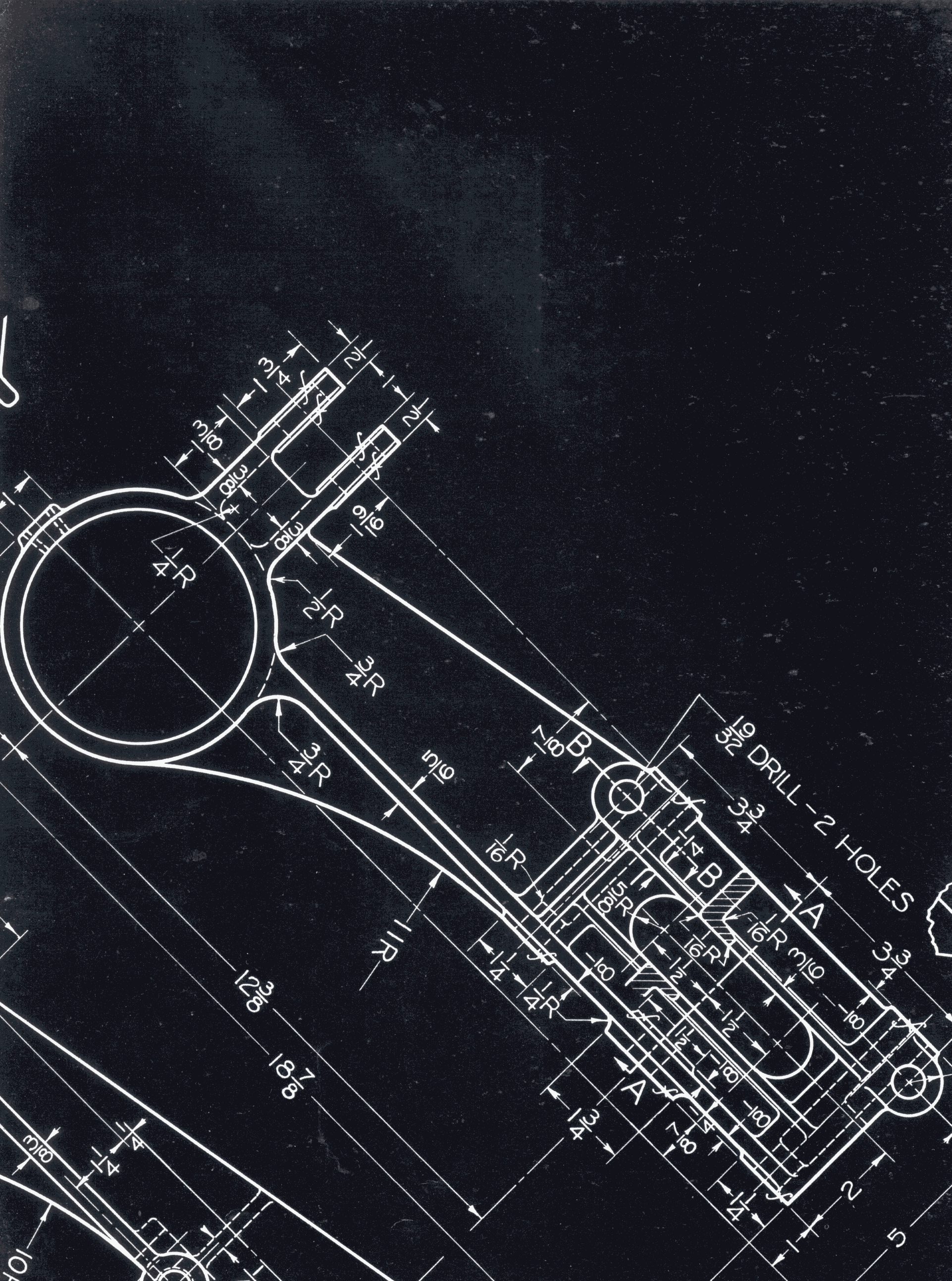
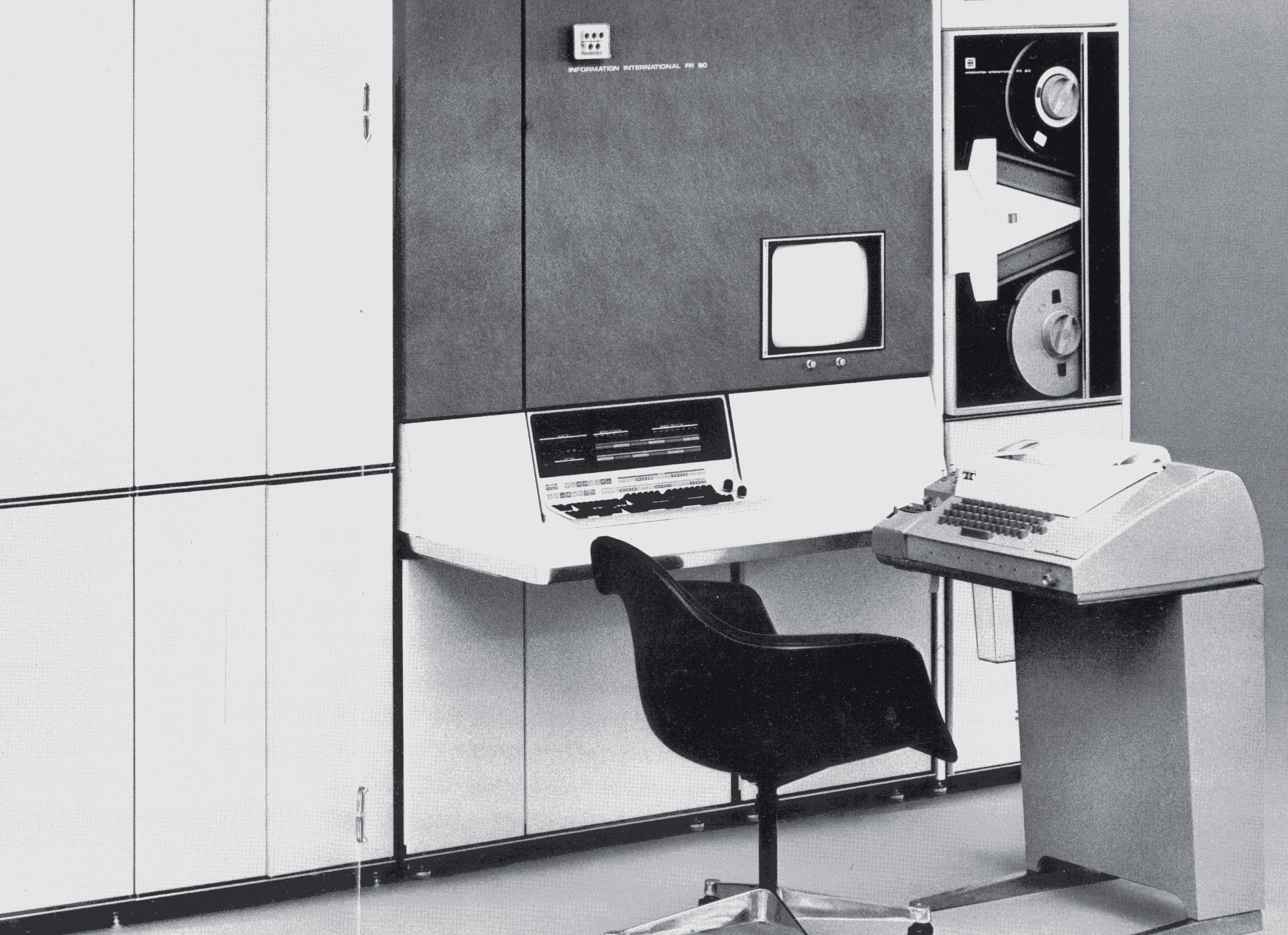
FR80 has been designed and developed by a computer-oriented company, by a staff that is hardware /software integrated. The total system is likewise integrated. As a direct result, FR80 is simple to use; many functions otherwise performed by operator are carried out by FR80 under program control. An example is the setup of application parameters. FR80 stores such parameters, leaving the operator only to initiate them. In reliability and maintainability, too, hardware and software work together.
Strong software and flexible hardware are, in fact, the guarantee of FR80's future as a useful system. To be digital is to precise; to be programmable is to invite change.
The FR80 Film Recorder is organized into five functional sections: Input Section, Processor, Data Translator, Recording Unit, and Display Monitor. Digital data from magnetic tape is automatically transformed into a visual presentation and recorded on microfilm.
Input Section - Standard FR80 input consists of 7- or 9-track magnetic tape units, a master tape controller, teletype, and paper tape reader. The master tape controller may be expanded to four magnetic tape units and provides switch selection of the desired input. The input section controls the flow of data to the processor at a nominal transfer rate of 18,000 18-bit words per second. The teletype and paper tape units serve as a 10-characters-per-second auxiliary communications link with the processor unit.
Optional On-Line Input - An optional feature of FR80 is on-line operation with a host computer. When the option is selected, a special interface (dictated by the user's equipment) is substituted for the magnetic tape unit and tape controller. The data and control signals are transferred on-line to the processor at a nominal rate of 650,000 18-bit words per second.
Processor - The processor is an 18-bit binary computer, with a 4096-word memory. Serving as the central control unit of the system, the processor combines operating data and plotting instructions for routing to the data translator. Under program control, the processor instructs the data translator to generate the alphanumerics, vectors, and special forms required.
Data Translator - The high precision and versatility of FR80 is determined by the function generators and control circuitry contained in the data translator. The translator is subdivided into a vector generator, character generator, point plot circuitry, and control circuits for the monitor and recording section. Upon command from the processor, the digital data received by the translator is converted to analog signals which control the precision light source selection beam. The deflection drive signals are corrected for linearity, focus, and astigmatism before routing to the light source deflection coils. Control signals from the data translator maintain control of the camera and monitor functions.
Recording Unit - Electrical signals are converted into a recorded film image in the recording unit, which comprises a precision light source, optics, and microfilm camera. Electromagnetic deflection is used to position the light source beam and achieve the best possible image quality. The created image is focused by the optical system and recorded by the microfilm camera. The recording cameras are available with incremental pulldown. The flexibility of FR80 permits the addition of Miracode and other retrieval codes to the microfilm record.
Display Monitor - The display monitor provides the operator with a window into the system. An 8-inch by 10-inch cathode-ray display tube is driven directly from the precision light source to provide an accurate view of the recorded image.
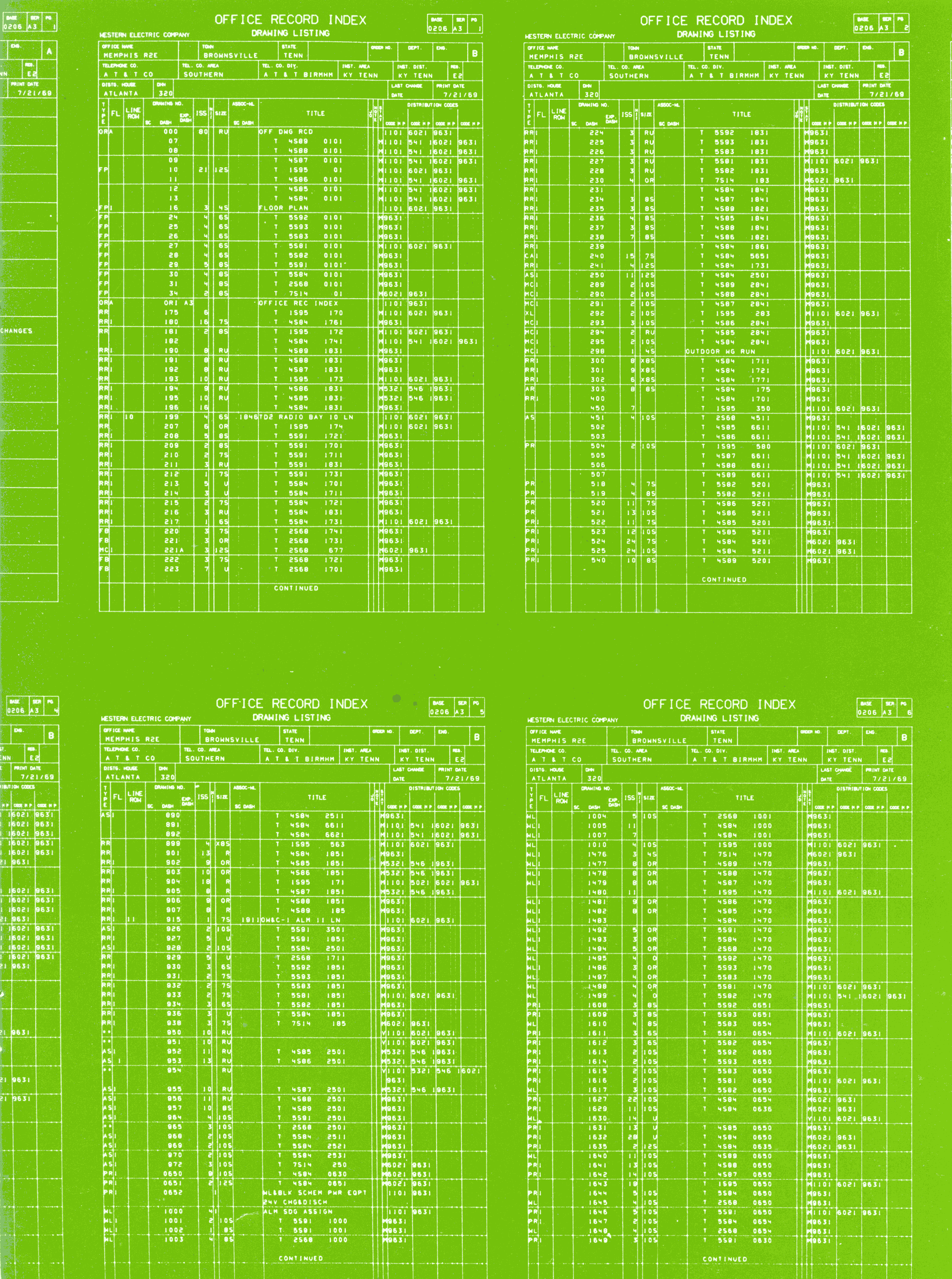
This is sectional enlargement of eight computer pages recorded on a single 35mm frame, as used by Western Electric Company at its Service Division, Southern Region, Atlanta, Georgia.
| FR80-21-1 Movie or Copyflo |
FR80-21-2 Movie |
FR80-22 Retrieval |
FR80-23 Aperture Card |
|
|---|---|---|---|---|
| Film | 35mm perforated | 16mm perforated | 16mm unperforated | 35mm unperforated |
| Advance (inches) | *0.748 ± 0.0004 | *0.300 ± 0.0004 | 0.470 | 2.031 ± 0.016 |
| Advance Increment (inches) | N/A | N/A | 0.1175 | 0.3385 |
| Aperture (inches) | 0.800 × 1.000 | 0.350 × 0.415 | 0.690 × 0.580 | 1.615 × 1.197 |
| Max Image (inches) | 0.748 × 0.980 | 0.295 × 0.404 | 0.630 × 0.550 | **1.467 × 1.133 |
| Addressable Positions | 12,532 × 16,384 | 4,932 × 6,755 | 16,384 × 14,300 | 16,384 × 12,646 |
| Full Frame Pulldown | 74 ms | 74 ms | 74 ms | 98 ms |
| Differential Pulldown (single increment) |
N/A | N/A | 12 ms | 12 ms |
* Pin-registered film advance
** Digitally addressable area is 1.433 × 1.133 inches (equivalent to 30X reduction of E-size drawing less ½-inch right and left border). Characters may be recorded and vectors may extend into border area.
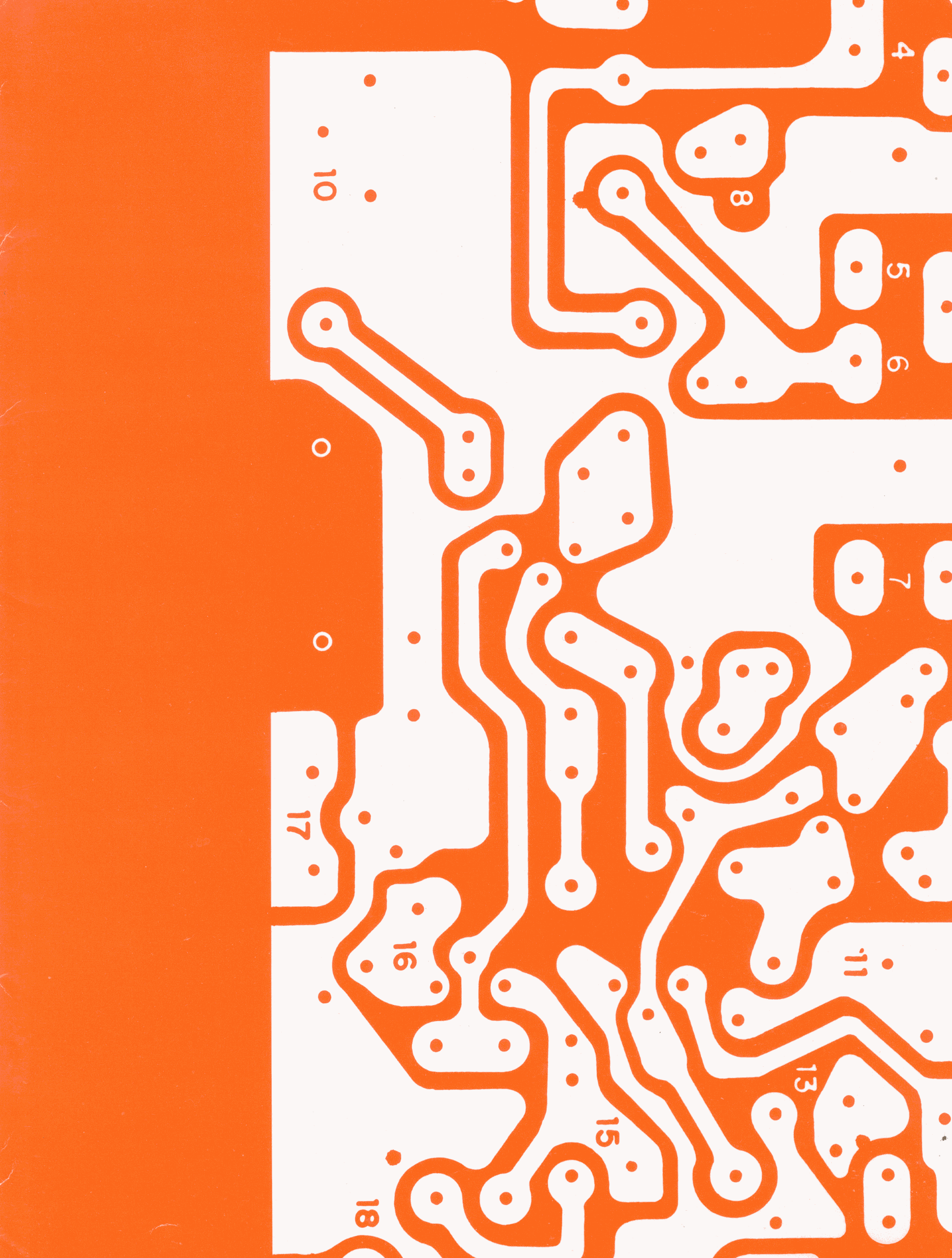
The FR80 software package is uncommonly comprehensive. Included are utility programs, an assembler, on-line scope editor, and on-line debugger. A variety of other routines allows the creation of film recordings from magnetic tapes produced for other manufacturers' recorders, plotters, and printers. An optional graphics package permits light pen intervention, character design, and forms design on the scope.
Assembler - A two-pass macro-assembler with various input-output options, including paper tape and disk.
Scope Editor - This program allows for the preparation, examination, and modification of textual material (including symbolic programs). Input may be from teletype keyboard, paper tape, or disk. Output may be in the form of scope display, listing, paper tape or disk. A wide variety of editing functions are available, such as insertion, deletion, and modification of lines as well as characters within lines.
Debug - An on-line interactive supervisor that permits the monitoring, modification, and running of programs under control of the teletype. It allows for symbolic referencing, break points, searches, replacement, patching, and many other features useful in the checkout and operation of programs. With the disk option, any portion of the program may be displayed in symbolic form on the console monitor scope.
[All of the Digital Equipment Corporation's standard software is also provided. This package includes a FORTRAN IV Compiler and operating system, an assembler, editor, debugging package, loader and utility programs to copy, dump, compare and update source programs on magnetic tape.]
The following applications programs utilize automatic error checking, returning to the operating system on illegal op-codes or other unusual conditions. They allow the buffer to accept magnetic tapes produced for Stromberg DatagraphiX recorders, CalComp and Gerber plotters, and any impact printer in general use.
These programs share specialized magnetic tape read-only routines that allow input from 7 -channel tapes at 200,556, or 800 bpi, and 9-channel tapes at 800 bpi. Variable blocked tapes in binary or BCD or mixed mode are readable. Error checking is automatic on tape input, with the routines returning to the operating system for operator action.
CalComp Simulator - Records tapes written for all the common CalComp plotters.
SC-4020 Simulator - Records any plot tape produced for the standard SC-4020.
SD-4060 Simulator - Records any plot tape written in Meta-Language for the standard SD-4060.
Gerber Simulator - Records any plot tape written for a Gerber plotter.
Printer Simulator - This is a program to record on film print tapes made for any impact or microfilm printer in general use. Forms display capability is included as standard feature. Character size, character spacing, line spacing, lines per page and number of characters per line are variable and may be changed by the operator for nonstandard applications. Pages are automatically centered, but other positioning may be specified by the operator if desired.
Camera pulldown is incrementally variable and may be selected by the operator for frame widths greater or less than standard. Particular files, records, or frames may be selectively recorded. Labels on 360/OS and DOS tapes will be read and interpreted correctly. 360 Report Writer tapes can also be printed.
In addition, a large library of programs is available for the standard FR80 as well as the options such as: Disk, Graphics Systems, etc.
Existing software of the host computer can be accommodated by FR80 without modification.
Advanced FR80 features may be activated with minor additions to the host computer software.
In a continuing effort to augment the very strong FR80 programming package, Information International is presently developing the following additional graphic arts software for FR80:
Information International provides a comprehensive support service available throughout the life of an FR80 installation. Most of these services are offered at no charge, or for a nominal fee. The support services available cover the following general areas:
